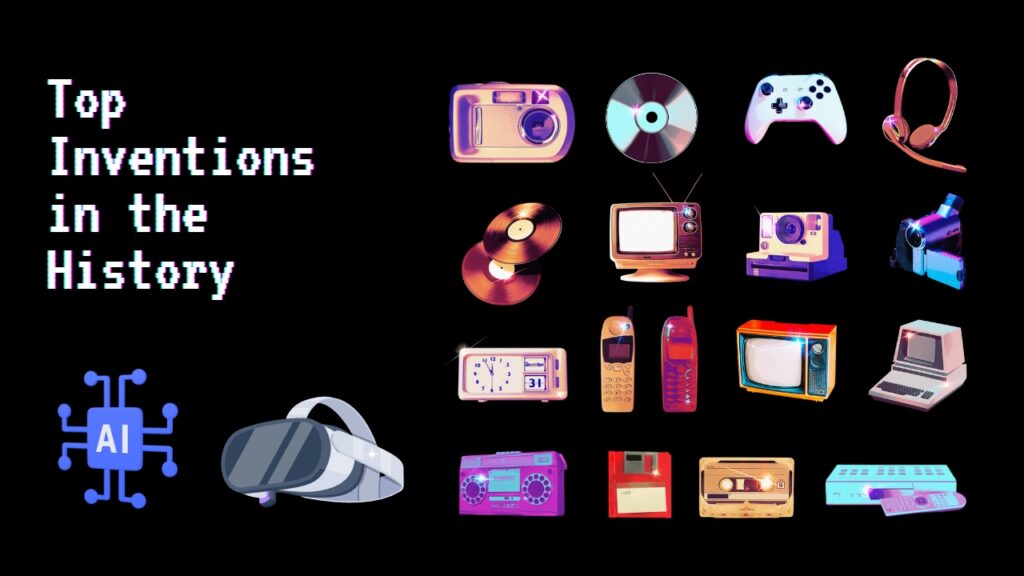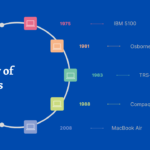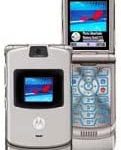Innovation has always been the lifeblood of human advancement. From the primitive tools of our ancestors to the sophisticated gadgets of the digital age, our quest for knowledge and improvement has led to remarkable inventions that have reshaped the fabric of society.
As we delve into the vast tapestry of human ingenuity, it becomes evident that some inventions stand head and shoulders above the rest, leaving an enduring legacy that transcends time and borders.
These transformative creations have not only improved our lives but have also revolutionized entire industries, sparking paradigm shifts that have shaped the world as we know it.

From the invention of the internet to the development of artificial intelligence, the world has changed drastically in a relatively short amount of time.
Timeline of Important Inventions
-
1436Printing PressThe printing press is a mechanical device for printing text or images from type, blocks, or plates onto paper or other materials. It was invented in the mid-15th century by Johannes Gutenberg in Germany and is often considered one of the most important inventions in human history.
-
1698Steam EngineThe steam engine was a key invention of the industrial revolution and is widely considered to have been invented by Thomas Savery and Thomas Newcomen in the early 18th century, with Savery’s engine patented in 1698. The steam engine was a revolutionary technology that converted the energy of steam into mechanical work. It was used to power machinery in factories and to drive locomotives and steamships.
-
1800ElectricityWhile electricity was not invented by a single person, its discovery and harnessing changed the world. In 1800, Italian scientist Alessandro Volta made a groundbreaking discovery. He created the first electric cell by soaking paper in salt water and placing zinc and copper on opposite sides of the paper. When the two metals were connected, a chemical reaction occurred and generated an electric current. This was the first time an electric current was produced without the use of a generator.
-
1816CameraModern cameras have seen considerable advancements over the years due to the creativity and hard work of numerous inventors. Joseph Nicephore Niepce’s invention of the camera in 1816 revolutionized the field we know today. His device, known as a “camera obscura,” was a box-like structure that allowed a person to take photographs. Niepce used a process called heliography to capture his photographs on a polished pewter plate coated with bitumen. This process involved exposing the plate to light and producing a photograph as a result.
-
1876TelephoneInvented by Alexander Graham Bell in the late 19th century, the telephone changed the way we communicate. It made it possible to talk to people across long distances and transformed the way we do business and stay in touch with loved ones.
-
1896RadioGuglielmo Marconi’s invention of the radio in 1896 had a great impact on communication and entertainment. His radio was the first of its kind to use electromagnetic waves to send and receive signals, giving people the power to talk to each other wirelessly from a distance.
-
1903AirplaneThe Wright Brothers, Wilbur, and Orville are credited with the first successful powered flight. Their invention revolutionized the way people travel, allowing for faster and more efficient transportation than ever before. Since then, traveling and transportation have become much easier, allowing people to travel across countries quickly and with ease.
-
1927Electronic TelevisionElectronic TV was invented in 1927 by 21-year-old inventor Philo T. Farnsworth, who called it the image dissector. Prior to this invention, television was only able to be viewed through mechanical means, such as a spinning disk. With all-electronic TV, people could now watch television without the need for any mechanical components. This invention allowed for more accurate and detailed images to be transmitted and made it easier for people to watch television from the comfort of their own homes.
-
1957Augmented RealityMorton Heilig is credited with being the first to introduce the concept of augmented reality in 1957 when he created the Sensorama. This machine was designed to provide users with a more immersive experience by adding visuals, sounds, vibration, and even smell to their surroundings. This was the first time that anyone had used technology to enhance a person’s physical environment in this way.
-
1960sInternetThe internet has become a ubiquitous part of life since its development in the 1960s. It is a vast network of computers that enables people to connect and share information with each other. The invention of the internet cannot be attributed to a single person, as it has developed and grown over time. In the 1960s, the United States Department of Defense designed the ARPANET, which connected computers from all around the world using a network. This network provided the foundation for what would eventually become the internet. As the years went by, new features were added and the internet became more sophisticated. In 1989, these advancements culminated in the creation of the World Wide Web, a platform that revolutionized the way people communicated. This development enabled people to access information from all corners of the globe, meaning that the world had gotten significantly smaller and the internet was now commonplace.
-
1971Personal ComputerThe Kenbak-1, released in 1971, is considered to be the world’s first personal computer. It was designed and invented by John Blankenbaker of Kenbak Corporation and was the first of its kind to be sold commercially. The Computer History Museum recognizes it as a significant milestone in the history of computing, as it was the first computer to be designed for individual use.
-
1973Mobile PhoneIn 1973, Motorola revolutionized communications with the invention of the first mobile phone. This cutting-edge device was the first of its kind, providing users with the ability to make and receive calls while away from a base station. Weighing 2.5 pounds and measuring 9 inches long, it was much larger and more expensive than the handheld models that would come in later years.
-
1974BarcodeThe concept of the barcode dates back to the 1940s and it took several decades for the technology to catch up with the idea. The barcode is a series of lines and spaces that can be read by a barcode scanner, allowing for fast and accurate identification of products. The invention of the barcode in 1974 by George J. Laurer revolutionized the way we track and manage products.
-
1978GPSGlobal Positioning System (GPS) technology was first developed and tested by the United States Department of Defense in 1960 under the name “Transit”. This system was initially used for military purposes, however, technological advancements have allowed the system to expand its use into commercial applications. In February 1978, the first satellite of the Navstar GPS was launched and the system continued to evolve throughout the 1990s. In 1999, GPS technology appeared in cell phones and later in automobiles. GPS has become an invaluable tool for navigation, both for personal and commercial use.
-
1983Personal Computer with GUIIn 1983, the first commercially available personal computer with a mouse and a graphical user interface (GUI) was introduced by Apple. Apple Lisa was praised for its technical accomplishments but ultimately considered a commercial failure. Despite this, it featured a number of advanced features that would later be seen on Macintosh and IBM PC-compatible computers. These features included a graphical user interface, a mouse, and protected memory.
-
1984CDROMIn 1982, Japanese company Denon developed the CD-ROM, a type of computer storage technology. This was introduced to the public at a computer show in 1984 by Denon and Sony. CD-ROMs could hold up to 650 megabytes of data, which was a tremendous increase from the 1.44 megabytes of data that could be stored on a floppy disc at the time. This new storage format allowed for faster data transfer rates and better durability when compared to the floppy disc. CD-ROMs quickly became the preferred storage format for computers throughout the 1980s and 1990s.
-
1989World Wide WebTim Berners-Lee, a British computer scientist, developed the World Wide Web in 1989. The World Wide Web is a system of interlinked, hypertext documents that can be accessed over the internet. It was designed to make it easier for people to share information across the globe. It has since become the primary way for people to access information and communicate with each other online.
-
1996USBIn 1996, USB (Universal Serial Bus) was released, making the process much simpler. Developed by Ajay Butt from Intel in 1994, USB didn’t become widely used until 1998 when the first iMac was released as a USB-only machine.
-
20195G5G is the latest generation of wireless networks designed to offer virtual connections to people, items, and even machines. In April 2019, areas of Chicago and Minneapolis became the first cities with access to 5G, allowing residents and visitors a new, faster, and more reliable connection. The impact of 5G technology is expected to be far-reaching, transforming the way we live, work, and communicate. It will enable new technologies like autonomous vehicles, virtual and augmented reality, and the Internet of Things (IoT), allowing for a more connected and efficient world.





